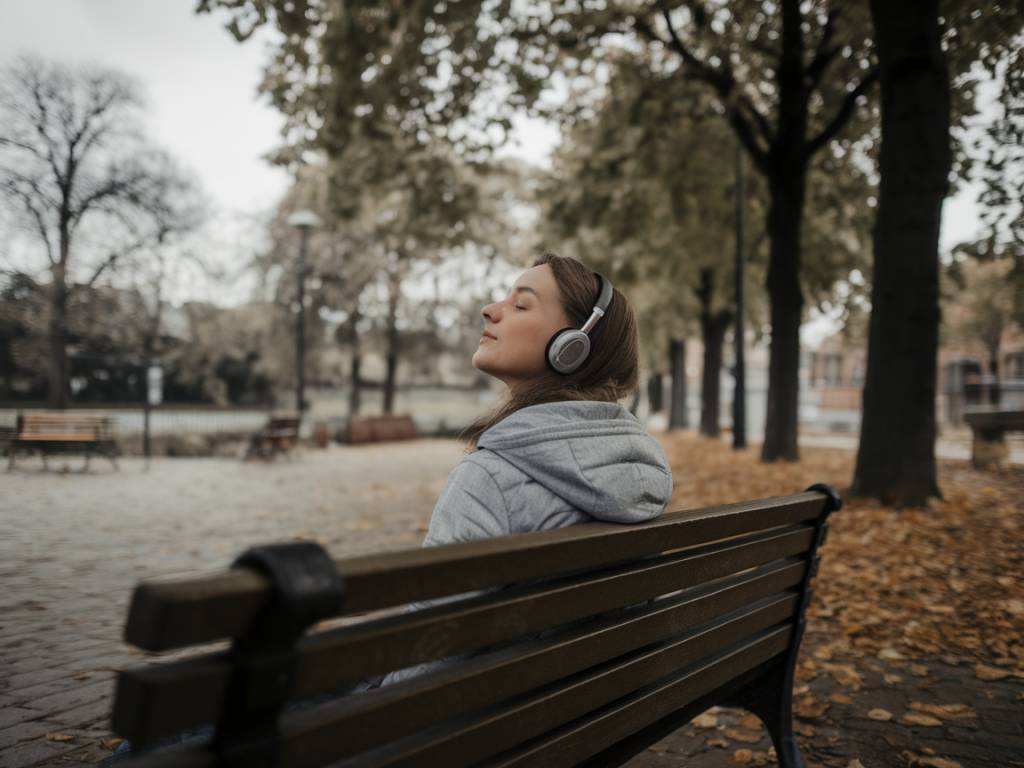Sound meditation, also known as sound healing or sound therapy, is an ancient practice that has garnered significant attention in modern wellness circles. Central to this practice is the concept of rhythm, which acts as a fundamental pillar in the effectiveness of sound meditation. In this article, we will delve into the impact of rhythms on sound meditation, exploring how rhythmic patterns facilitate deep states of relaxation, healing, and transformation.
The Science Behind Sound Meditation
Sound meditation relies on the interplay of various auditory elements, such as frequency, tone, and rhythm, to foster a meditative state. Scientific studies have illustrated that certain rhythms can entrain brainwave activity, moving it from a busy beta state to a more relaxed alpha or theta state. This process, known as brainwave entrainment, lies at the heart of sound meditation’s potent effects.
Brainwave entrainment occurs through a phenomenon called frequency-following response (FFR). When the brain is exposed to a repetitive auditory stimulus, such as a drumbeat or a gong, it starts to synchronize with the external rhythm. Over time, the brain aligns its frequency to match that of the stimulus, leading to altered states of consciousness that are conducive to deep relaxation and healing.
The Role of Rhythm in Sound Meditation
While various elements contribute to the efficacy of sound meditation, rhythm is arguably one of the most crucial. Rhythmic patterns serve multiple purposes in the context of sound meditation:
- Facilitating Brainwave Entrainment: Rhythmic beats, such as those produced by drums or Tibetan singing bowls, help guide the brain into desired states of awareness.
- Creating Predictability: A consistent rhythm provides a predictable auditory environment, which can help ease anxiety and promote a sense of security.
- Enhancing Focus: The repetitive nature of rhythms can enhance focus, allowing the meditator to enter a state of deep concentration.
- Grounding the Physical Body: Low-frequency rhythms can resonate with the body’s natural vibrations, further grounding the physical self.
Historical Context and Cultural Roots
Rhythmic sound meditation has its roots in various ancient cultures. Indigenous tribes around the world have long employed repetitive drumming and chanting to enter altered states of consciousness. For example, the Australian Aboriginal didgeridoo has been used for thousands of years for healing and spiritual purposes. Similarly, Tibetan monks use singing bowls and chanting to facilitate meditation and spiritual enlightenment.
These ancient practices recognize the intrinsic connection between rhythm and the human psyche. By employing repetitive rhythms, these traditions tap into universal aspects of human consciousness, promoting healing and spiritual well-being.
Modern Applications and Techniques
Sound meditation has evolved to incorporate various modern techniques and instruments, each leveraging the power of rhythm in unique ways:
Drumming Circles: Community drumming circles often use repetitive beats to foster a sense of unity and collective energy. These gatherings have been found to reduce stress and promote emotional healing.
Singing Bowls: Tibetan singing bowls produce harmonic tones and rhythms that can deeply resonate with the listener, promoting a meditative state. The rhythmic striking or rubbing of the bowl’s rim creates a continuous sound that assists in brainwave entrainment.
Gong Baths: Gongs produce rich, complex overtones and rhythms that can envelop the listener in sound, leading to profound states of relaxation and transformation.
Electronic Music: Modern practitioners are also exploring electronic music’s potential for sound meditation. Genres like ambient or downtempo music often incorporate soothing rhythms and beats designed to entrain the brain to specific states of awareness.
Benefits of Rhythmic Sound Meditation
The benefits of incorporating rhythm into sound meditation are manifold. Research and anecdotal evidence suggest the following advantages:
- Reduced Anxiety and Stress: Rhythmic sound meditation helps to lower cortisol levels, a stress hormone, thereby promoting relaxation.
- Improved Focus and Concentration: The repetitive nature of rhythms can help to quiet the mind, enhancing mental clarity and focus.
- Enhanced Emotional Well-being: The grounding effect of rhythms can help balance emotions, providing a greater sense of emotional stability.
- Physical Healing: Some practitioners believe that rhythmic sound vibrations can promote physical healing by enhancing cellular function.
- Spiritual Connection: Rhythms can facilitate altered states of consciousness, allowing for deeper spiritual exploration and connection.
How to Practice Rhythmic Sound Meditation at Home
For those interested in incorporating rhythmic sound meditation into their wellness routine, there are several methods to explore:
- Use of Instruments: Invest in simple instruments like a drum, a Tibetan singing bowl, or even a handheld rattle. Explore creating your rhythmic patterns during meditation.
- Guided Sessions: Many online platforms offer guided sound meditation sessions that incorporate rhythmic elements. Websites and apps can provide accessible ways to start.
- Recorded Music: Purchase or stream sound meditation tracks designed with rhythmic components. Many artists specialize in creating music for meditation that leverages brainwave entrainment.
- Community Events: Seek out local drumming circles or sound baths. Participating in group sessions can amplify the benefits and provide a sense of communal support.
Future Directions and Research
While the benefits of rhythmic sound meditation are well-documented anecdotally, there is still much room for research in this field. Future studies could explore the specific neural mechanisms behind brainwave entrainment and its long-term effects on mental health. Additionally, investigating the role of different rhythms and instruments in clinical settings could offer new pathways for therapeutic interventions.
As interest in holistic wellness continues to grow, rhythmic sound meditation stands poised to become an integral part of mental, emotional, and physical well-being strategies. By harnessing the ancient wisdom of rhythm and merging it with modern techniques, this practice offers a compelling avenue for those seeking balance and harmony in their lives.
In conclusion, the impact of rhythms on sound meditation is profound and multifaceted. From its roots in ancient cultural practices to its modern applications, rhythm serves as a powerful tool for brainwave entrainment, emotional healing, and spiritual exploration. As more individuals and researchers delve into this practice, the potential for rhythmic sound meditation to transform lives becomes increasingly apparent.

